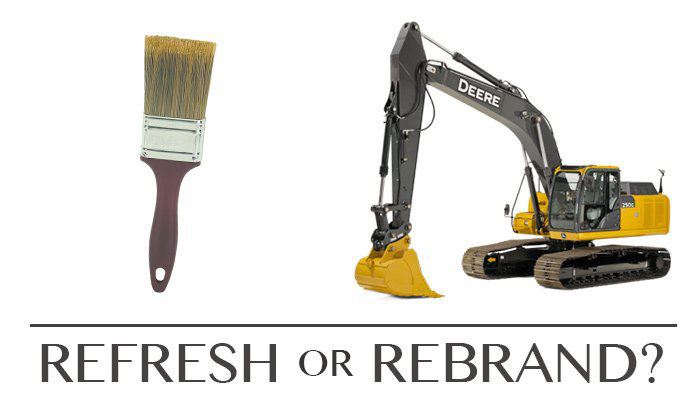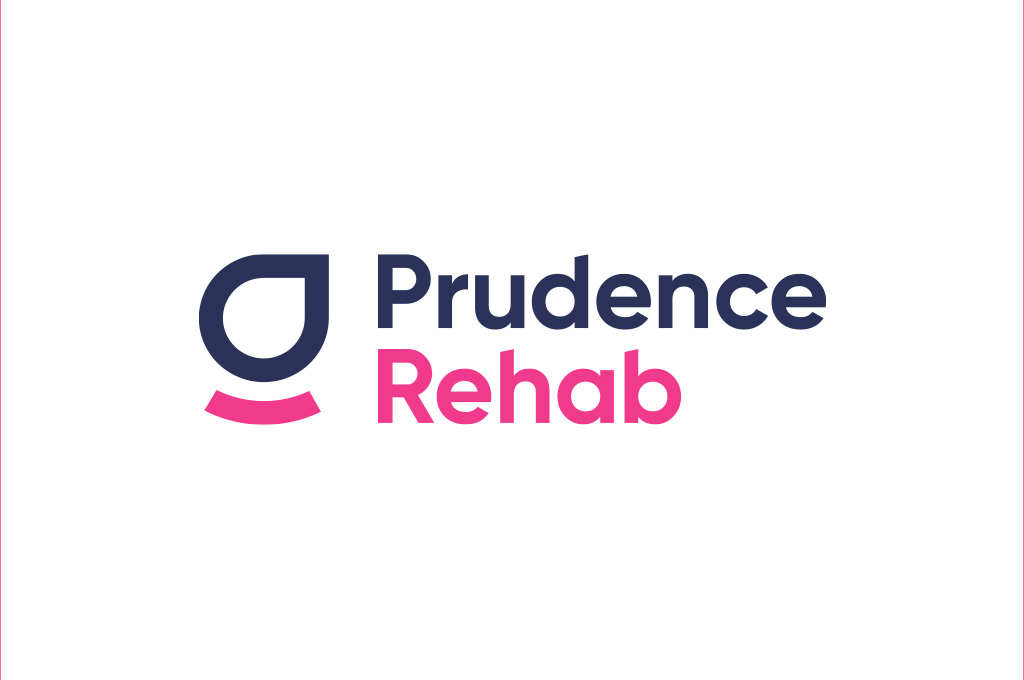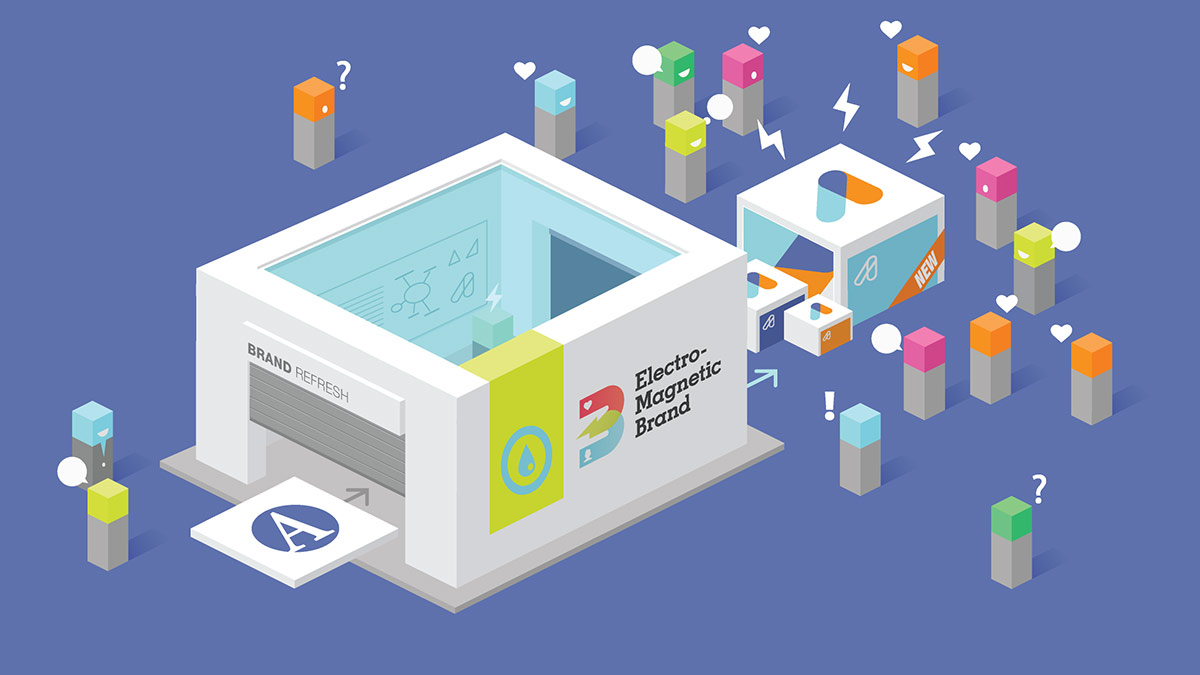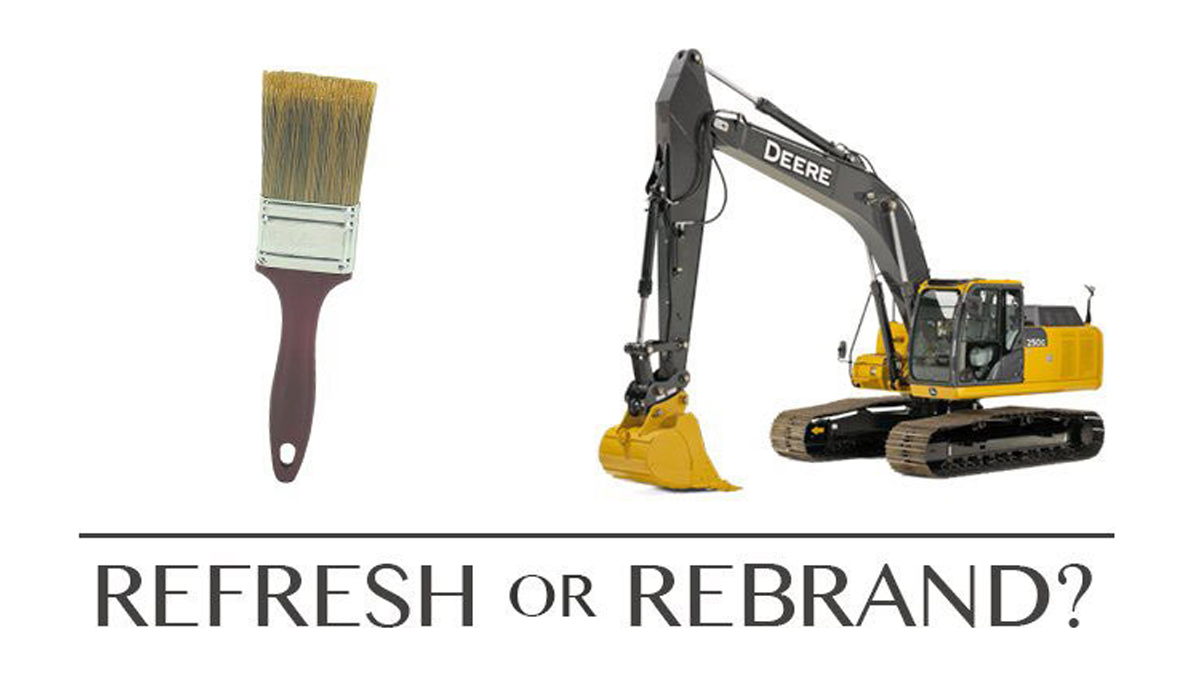Brand Refresh versus Rebrand?
When is it right to refresh your brand versus a complete rebrand?
Rebranding is massive!
Not only the impact both internally and externally for the business, but it’s a huge project to undertake for all involved.
That’s why rebranding usually correlates with an equally massive change, or significant shift for a business, like one of the following:
- Ownership change
- Maturation of business
- Expansion into new markets or geography
- Change in direction
- Merger, acquisition, or spin off
- Legal or reputation damage
- Overwhelming success of a sub-brand.
These and others tend to create big disconnects or confusion with your brand name, positioning statement or logo. When your branding creates confusion, it’s time to consider a rebrand.
A brand refresh on the other hand is an alternative when there is inconsistent use of the logo, mixed (or multiple) messaging, or simply an outdated look and feel.
The difference between the two from a creative agency perspective equates to different levels of expertise, higher quantity of head hours and client collaboration.
A complete rebrand requires significantly more strategic resources and processes to define the brand platform, some of which are:
- Market and Customer Research and Analysis
- Brand Workshops
- Purpose, Values and Promise Realignment
- Brand Strategy and Direction
- Key Messaging and Strapline
That’s all before starting on the design concepts!
From the rebranded client perspective it is also very resource intensive. It requires significant involvement and energy in the early stages to define and develop the new brand.
Then once it has been completed, more time is required for the indoctrination and cultural buy in of the brand values, promises and purpose. The latter is often underestimated and undervalued. Your people need to become raving fans in order to create raving fans in your customers.

A brand refresh often requires much less time to complete, as typically there is strong brand name and platform to be built on, and a visual makeover is all that’s required.
In refreshing a brand we look for the key attributes that contain the brand story. We evolve the brand while keeping that element recognizable to maintain the brand story. It could be particular colours, shapes or symbols, a graphical element, or a type style.
It can be a simple as reworking the brand’s logo to make it more relevant to your market, more versatile and communicate the story clearer.
In a refresh, ensuring the brand is easily recognizable as the same business is the key. It’s an evolution not a revolution.
With a refresh it is wise to explore your strap line and lock up at the same time, and to create a comprehensive style guide to safely govern its application across all your brand collateral, digital assets and marketing material. After all the effort invested, you don’t want to leave any cracks.
Many companies update their brand to respond to market perceptions as their business evolves, the market changes, or technology changes.
The key is to stay fresh and relevant for your market so as to not lose any sales due to misconceptions. Some brand identities can go stale (especially those that were designed to meet a trend) and often it cannot be seen by the business owner as they are too attached and biased.
As with the clear differences between the two options, so is there a difference in the investment required. The considered business person equally weighs up the opposing question. What are the true (but often hidden) costs of a misaligned brand? i.e. Actual cost of lost sales, cost of fruitless marketing, cost of lost growth opportunities, cost of lost partnerships, cost of lost staff and HR, and cost of low morale and productivity.
How is your brand being perceived by the market? When was the last time you checked?
While this article is very black and white, there is grey area, so I invite you to speak with me about your brand for strategy that fits your situation.
Which do you think is right for you? Let me know in the comments.















 Being a B Corp now guides decisions about our projects, and who we choose to do business with. We soak it all in, and squeeze out the goodness.
Being a B Corp now guides decisions about our projects, and who we choose to do business with. We soak it all in, and squeeze out the goodness.